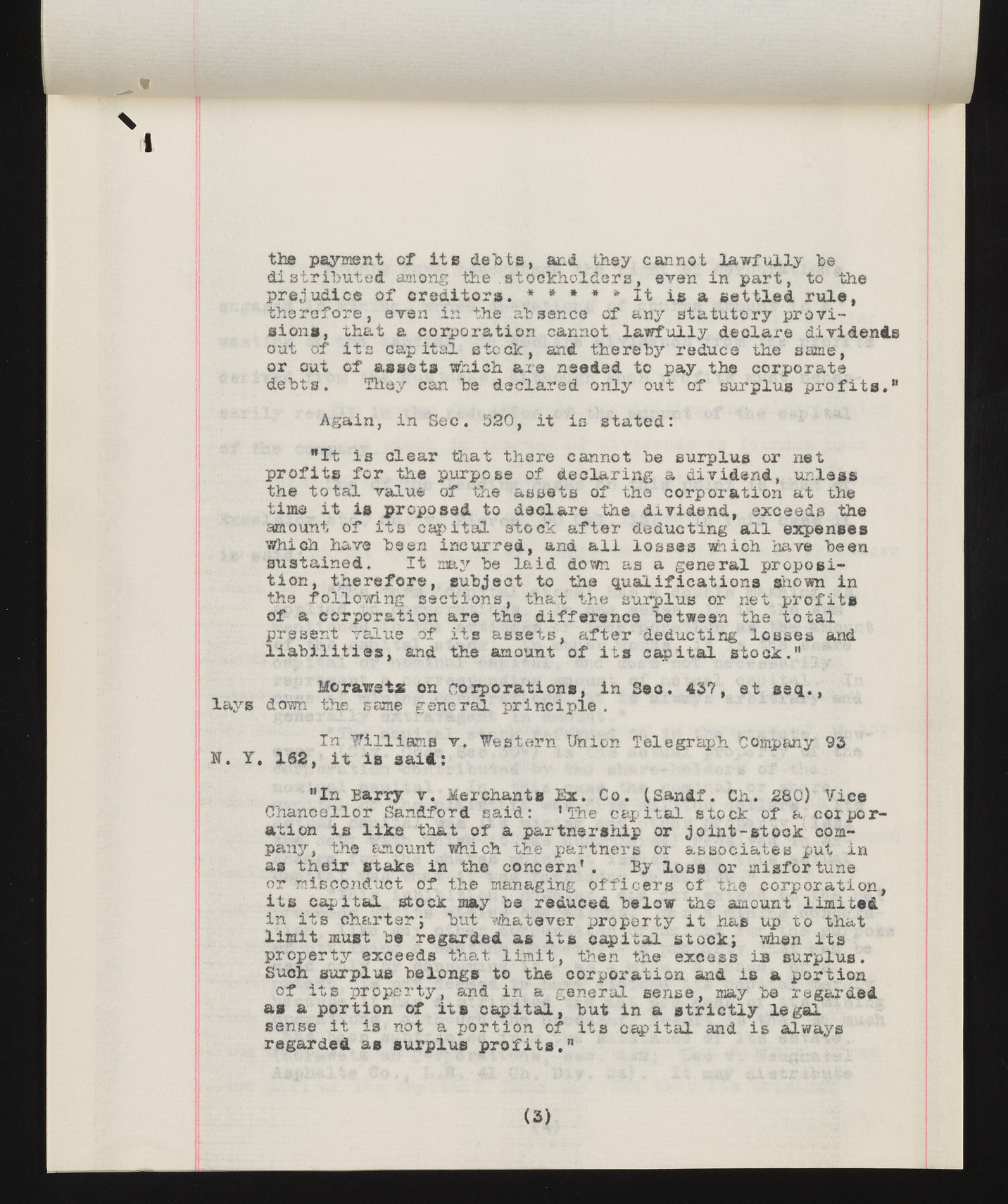Copyright & Fair-use Agreement
UNLV Special Collections provides copies of materials to facilitate private study, scholarship, or research. Material not in the public domain may be used according to fair use of copyrighted materials as defined by copyright law. Please cite us.
Please note that UNLV may not own the copyright to these materials and cannot provide permission to publish or distribute materials when UNLV is not the copyright holder. The user is solely responsible for determining the copyright status of materials and obtaining permission to use material from the copyright holder and for determining whether any permissions relating to any other rights are necessary for the intended use, and for obtaining all required permissions beyond that allowed by fair use.
Read more about our reproduction and use policy.
I agree.Information
Digital ID
Permalink
Details
Member of
More Info
Rights
Digital Provenance
Publisher
Transcription
the payment of Its debts, and they cannot lawfully be distributed among t h e .stockholders, even in part, to the prejudice of creditors. * * * * * It is a settled rule, therefore, even in the absence of any statutory provisions, that a corporation cannot lawfully declare dividends out of its capital stock, and thereby reduce the same, or out of assets which are needed to pay the corporate debts. They can be declared only out of surplus profits.** Again, in Sec. 520, it is stated: "It is clear that there cannot be surplus or net profits for the purpose of declaring a dividend, unless the total value of the assets of the corporation at the time it is proposed to declare the dividend, exceeds the amount of its capital stock after deducting all expenses which have been incurred, and all losses which have been sustained. It may be laid down as a general proposition, therefore, subject to the qualifications shown in the following sections, that the surplus or net profits of a corporation are the difference between the total present value of its assets, after deducting losses and liabilities, and the amount of its capital stock.” Morawst* on corporations, in Sec. 437, @t esq., lays down the same general principle . In Williams v. Western Union Telegraph Company 93 N . T. 162, it Is said: "In Barry v. Merchants Ex. Co. (Sandf. Ch. 280) Vice Chancellor Sandford said: 'The capital stock of a corporation is like that of a partnership or joint-stock company, the amount which the partners or associates put in as their stake in the concern'. By loss or misfortune or'misconduct of the managing officers of' the corporation, its capital stock may be reduced below the amount limited in its charterj but whatever property it has up to that limit must be regarded as its capital stock; when its property exceeds that limit, then the excess is surplus.' Such surplus belongs to the corporation and is a portion of its property, and in a general sense, may be regarded as a portion of its capital, but in a strictly legal sense it is not a portion of its capital and is always regarded as surplus profits." (3)

